wellness
Organizational Wellness: Your Organization Is Sick And It’s Costing You
May, 2023

wellness
Organizational Wellness: Your Organization Is Sick And It’s Costing You
May, 2023
A physiologically healthy organization allows for individuals to have the full range and capacity to deal with crisis as it unfolds. Leaders and employees who are burned out, ill, or in the throes of addiction have much less resources and capacity to pivot in the face of immediate change.
Employee wellness is an existential issue for an organization’s survival.
Yet within the corporate environment, health & wellness of employees has been compartmentalized – treated as a side project. Wellness programs and leadership development programs rarely intersect.
In the case of leadership development, somehow, an employee’s physical and emotional health are not taken into consideration as variables that effect how a person shows up to work. Moreover, organizations who seek to orchestrate change, rarely consider if employees even have the capacity to deal with sudden, stressful moments based on their underlying health.
Similarly, within wellness programs, responsibility is often placed at the foot of each individual without looking at how leaders, organizational culture and systems are creating the conditions for health or illness within the organization. Wellness is confined to the purview of a siloed Human Resources department or an EAP hotline that is rarely publicized.
We define Organization Wellness as a state when leaders, the organizational structure, and organizational culture create the conditions for each individual to reach their respective health potential. Each person has different needs – physically, emotionally, mentally – by necessity there is not a 1-size-fits-all solution. Each individual should have the opportunity to find their own optimal point of health.
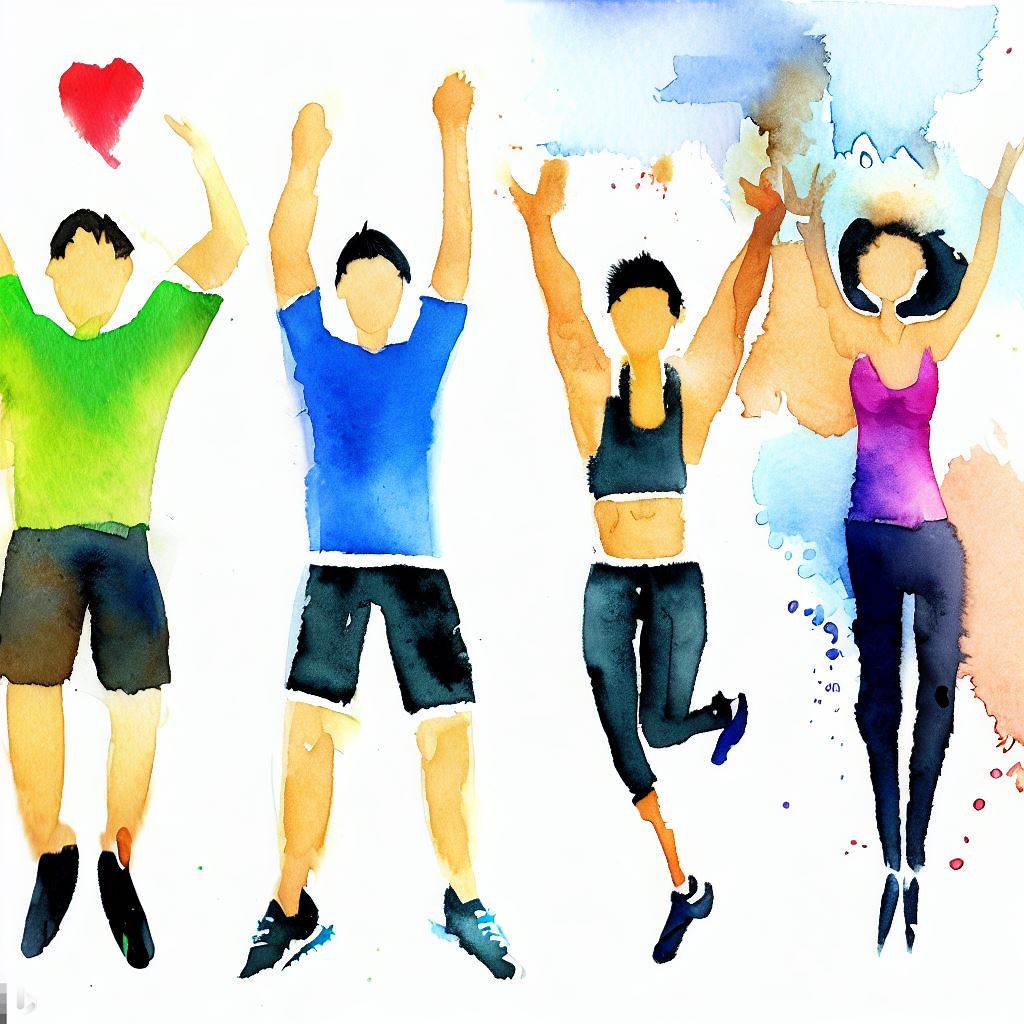
The business case is clear – over the long-run wellness programs save more money than they cost. One study found that every dollar invested in a wellness intervention yielded $6 in health care savings. A meta-analysis of 24 studies found that for every $1 spent on wellness programs, companies received an ROI of $3.35 in cost savings.
Organizations that invest in a wellness program routinely reduce their attrition below 10%. As a director of benefits and compensation stated bluntly, “Employees who participate in our wellness programs do not leave.” Wellness programs increase productivity, customer satisfaction and profitability.
150 studies between 1980 and 2010 have shown the clinical and cost effectiveness of comprehensive health promotion. Wellness programs have even been found to correlate with greater corporate stock or financial performance. And if this isn’t enough motivation, The U.S. Securities and Exchange Commission has recently published the Modernization of Regulation S-K. Publicly traded companies must now disclose investments in human capital assets, which account for an estimated 84% of the S&P 500 value, in their S-1, 10-Q and 10-K reports.
Once individual wellness has been collectively achieved, leadership has been established and there is a culture of change readiness, your organization has the ability to adapt to an ever-changing landscape. To prepare for the next crisis, ensure your population has the physical, emotional and mental capacity to withstand or even thrive during a shock.
Based on our research and work with clients, leaders will benefit from understanding:
One of the common conditions gaining recognition in the workplace is the phenomena of burn-out.
Burn-out is a state of emotional, mental, and often physical exhaustion brought on by prolonged or repeated stress. The good news is that it is entirely preventable and within the control of organizations.
Unfortunately, researchers at Stanford found that burn-out in the United States amounts to $190 billion in health costs and nearly 120,000 deaths each year. In the United States alone, an estimated $322 billion in productivity is lost annually due to employee burn-out.
Another study has found that employees experiencing burn-out are 63% more likely to take a sick day, 23% more likely to visit the emergency room, and 2.6x more likely to be actively seeking a new job.
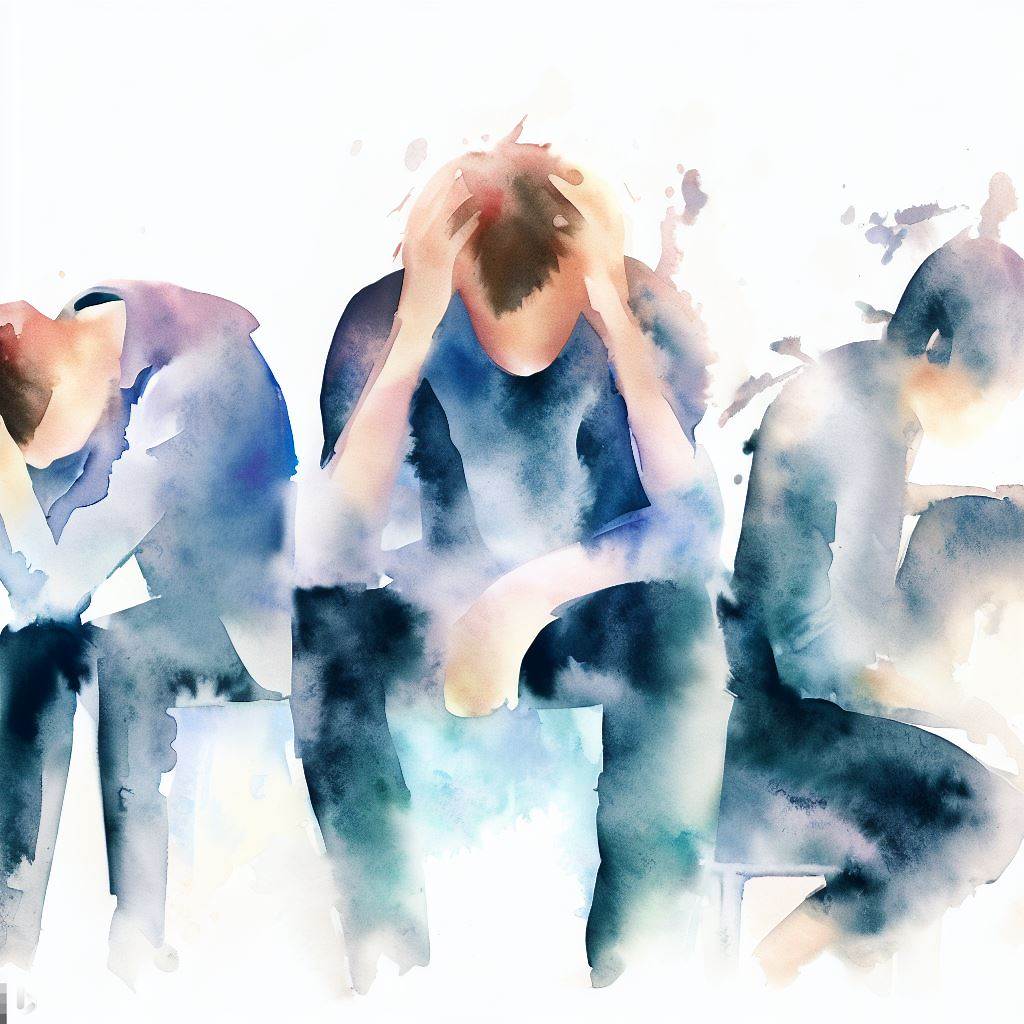
Stress is a necessary, biological response for our survival. It helps us cope with challenges and threats in our environment.
Hormones are secreted from glands throughout the body, including the brain, and are released into the bloodstream where they travel to their target organs or tissues. The stress hormone cortisol is produced in the adrenal glands, which are located on top of the kidneys. The production of cortisol is regulated by the hypothalamic-pituitary-adrenal (HPA) axis, which involves the interaction between the brain, the pituitary gland, and the adrenal glands. This axis is part of the brain-body connection, which describes the complex interactions between the nervous system and other physiological processes.
When we experience stress, our stress response is triggered and our bodies respond by activating the HPA axis, which leads to the release of cortisol, adrenaline and other stress hormones. These hormones trigger the "fight or flight" response, which prepares our bodies to respond to a perceived threat or challenge.
Our internal coping mechanisms can help regulate the stress response and bring it to a point of completion, allowing the body to return to a state of balance. This response is designed to help us stay alert and focused, and can be very useful in short bursts.
This short-term healthy stress is referred to as acute stress.
Acute stress enables learning and memory. For example, in experiments when human and animals are taken to a new environment, injected with the stress hormone cortisol, they increase the size of their memory and ability to learn.
Without stress survival would not be possible.
Stress is adaptation.
But…
When stress becomes chronic or excessive, it can lead to a dysregulated stress response, which can contribute to a range of physical and mental health problems. Whenever there is a peak in cortisol level and that peak is sustained over time, the body starts to break down.
Cortisol cannot stay high all the time. Chronic stress can lead to a range of health problems, including high blood pressure, weakened immune system, digestive problems, and increased risk of heart disease and stroke.
This long-term dysfunctional stress response is referred to as chronic stress.
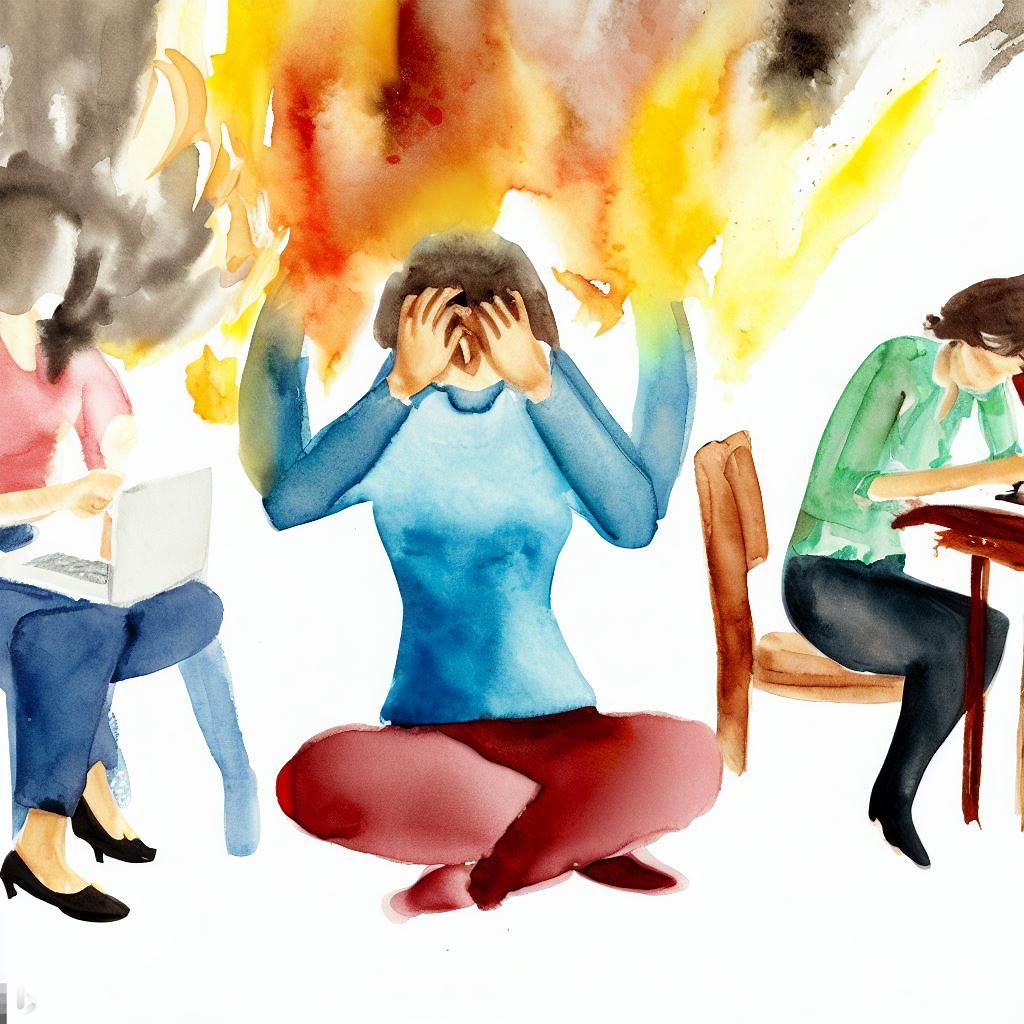
Chronic stress, characterized by sustained increases in cortisol levels over time, can have negative effects on the body's immune and digestive systems, leading to burnout and disease.
Instances of burn-out are rapidly increasing around the world. 43% of adults in the United States report high levels of daily stress and 61% report feeling they can reach burn-out at any moment in time. Globally, 615 million people suffer from depression and anxiety. The World Health Organization estimates that this costs an estimated $1 trillion in lost productivity every year.
Global Google searches for burn-out:

There are many alarm bells that sound on the path to burn-out. Yet in the way we choose to organize our society, it is often only when an individual reaches burn-out that the physical and mental toll of work is acknowledged.
Research shows, the top causes of burn-out are:
A leader who was overly stressed found himself burned-out in 2020. After working through the COVID-19 lockdowns, he found themselves physically exhausted and emotionally numb. One day walking in the woods, a dog lunged out at him. Completely drained, he did not have the inner resources to react or defend himself. There was no fight/flight response – just exhaustion. This incident gave way to a short sabbatical from work to rest. At the end of the break, he again was walking in the woods when a snake slithered out from some brush. He reactively jumped back, happy to discover that his nervous system was back online.
A leader or employee that is worn down can barely execute their prescribed tasks yet alone be ready to face an unexpected challenge. Chronic stress wreaks havoc on our immune systems and leads to increases in illness. In this state, employees and organizations as whole lack the capacity to face a crisis.
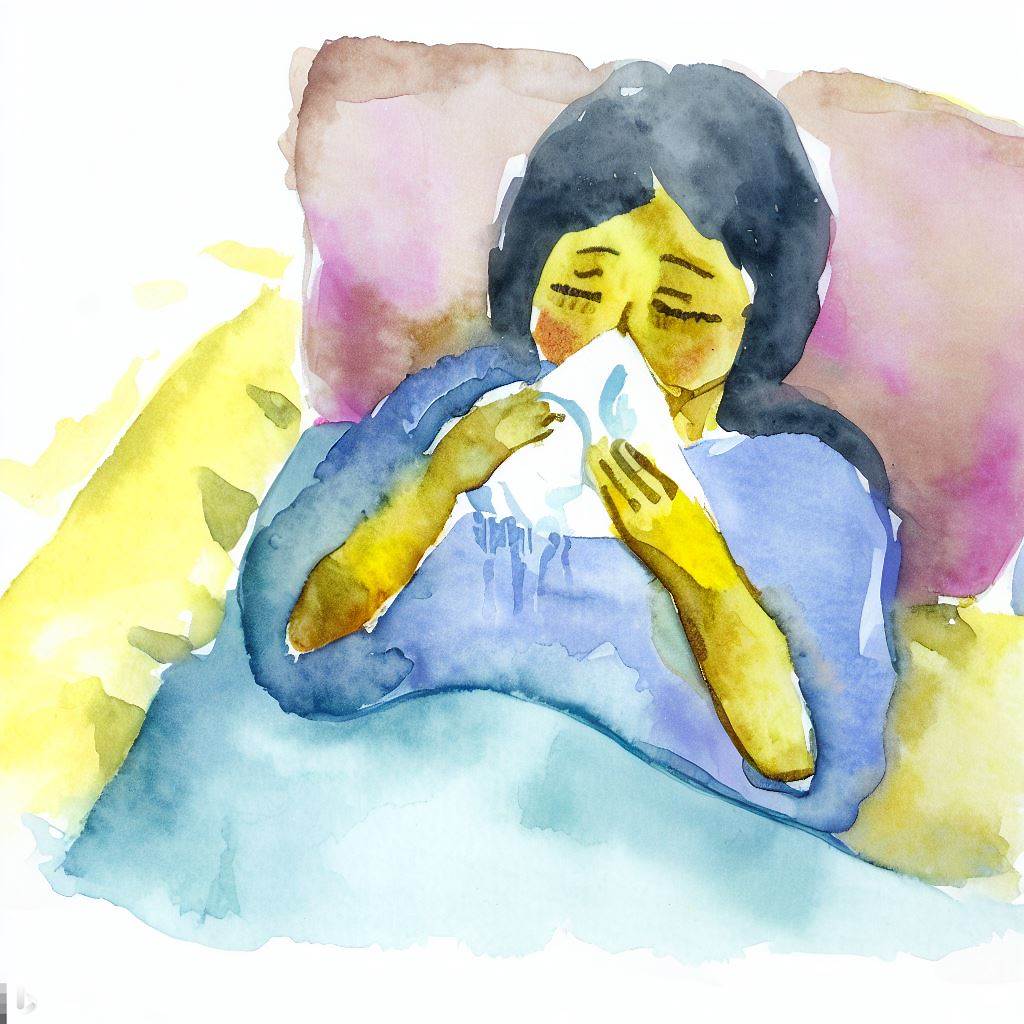
Researchers have discovered that illness – physiological, biological, psychological – most of the time is activated by stress. Alzheimer’s Disease has been long considered a genetic disease. Yet, it is now understood that the genetic predisposition to Alzheimer’s is overwhelmingly activated by stress.
On an individual level, the case for stress reduction is clear. If we want to be happy, healthy, strong then reductions in chronic stress are necessary. As an organization, equally, having a happy, health, strong population is critical to perform business functions over long periods of time.
Organizations often focus on the aspirational areas of motivation: employee recognition, rewards, and achievement. Yet when it comes to burn-out, it is the small, daily papercuts, the small dysfunctions that persist day in, day out that increase chronic stress.
Broken printers, unstable internet connections, computers that crash, unclear roles, sloppy communications all add up to daily frustrations that increase stress.
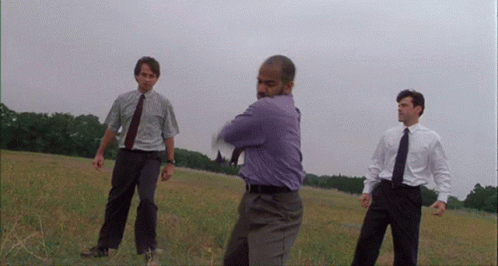
Office Space (1999)
These are organizational hygiene factors and, in our experience, they often show up in engagement surveys and requests for feedback. Yet some organizations may overlook these small hygiene factors, looking for “sexier” solutions. The big, flashy grand gesture to win employee sentiment.
Instead look for the small, annoying operational deficiencies that create friction and tension in the day-to-day. Listen and improve the ‘daily grind’ experiences for employees.
Addiction is a taboo subject in the workplace. There is either an implicit “don’t ask, don’t tell” practice or only comes to the surface when visible, extreme behavior necessitates HR intervention. We judge and blame the individuals, shaming them for their individual choices without seeing the broader truth.
Many work environments facilitate and even reward addiction. The compulsive behavior of addiction is often exploited in pursuit of short-term financial gain. And as a society, we are not honest about how many of us experience workplace addictions.

All kinds of addiction involve some form of disconnection. Disconnection with the self, disconnection from emotional body. Unable to feel their pain or their sadness, people turn to self-medication through work, food, drugs, alcohol, Netflix, pornography, tv, scrolling endlessly on phones and iPads.
On an individual level, addiction is this attempt to self-medicate. An uncomfortable emotion cannot be tolerated so it is linked to a behavior that produces a short-term instant good feeling. The uncomfortable emotion and the maladaptive behavior are coupled – linked together – and form a habit loop.
These uncomfortable emotions can be fear, guilt, shame, anger, disgust. It can be boredom. It can also be exhaustion. Choosing to bypass feeling tired.
The opposite of self-medicating is to feel.
The opposite of empty, mindlessly consuming is mindfulness.
The stereotypical Hollywood scene of eating ice cream after a relationship breakup. Grief cannot be felt fully, totally and must be counterbalanced with the quick pleasure of fat and sugar.

Legally Blonde (2001)
Overtime, the desire to escape the uncomfortable feelings mixed with the comfort of pleasure can become all-consuming. What we run from gets exaggerated, fear builds, and we keep on running.
Our brains are sophisticated systems built to keep us motivated, learning, and happy. Chemicals and hormones in the brain balance and offset one another to regulate our disposition. When in a cycle of addiction, over-time, we throw off the balance of these chemical systems. We deplete the chemicals responsible for our sense of pleasure, satisfaction and motivation. We wear ourselves down and feel more tired, more depressed, more bored. And so we chase the pleasure again.
Over-time, a leader found herself working more and more from bed. Taking calls right before falling asleep. Slowly she unconsciously starting spending all her days – work and leisure – in bed. She began to self-medicate in increasing amounts. After receiving coaching, she began to set boundaries and take meetings away from her bed. Her life began to change for the better but she also came face-to-face with the emotional pain she had been avoiding. It is only through feeling this pain that she can move beyond her addictions.
Another way to define addiction is a high-level narrowing of focus; to be consumed by a small number of activities. As our focus narrows, our addiction increases.
And if we are honest, many workplaces encourage this narrowing of focus, particularly as it comes to work itself.
When organizations seek to displace and replace an employee’s sense of purpose, meaning, social connection, sense of belonging, family … they foster an unhealthy reliance on work as the nexus of a person’s physical and emotional wellbeing. Companies like Google or Facebook that build spaces to sleep, cater food, encourage spending social time with co-workers, over time isolate individuals and create a narrowing of focus.
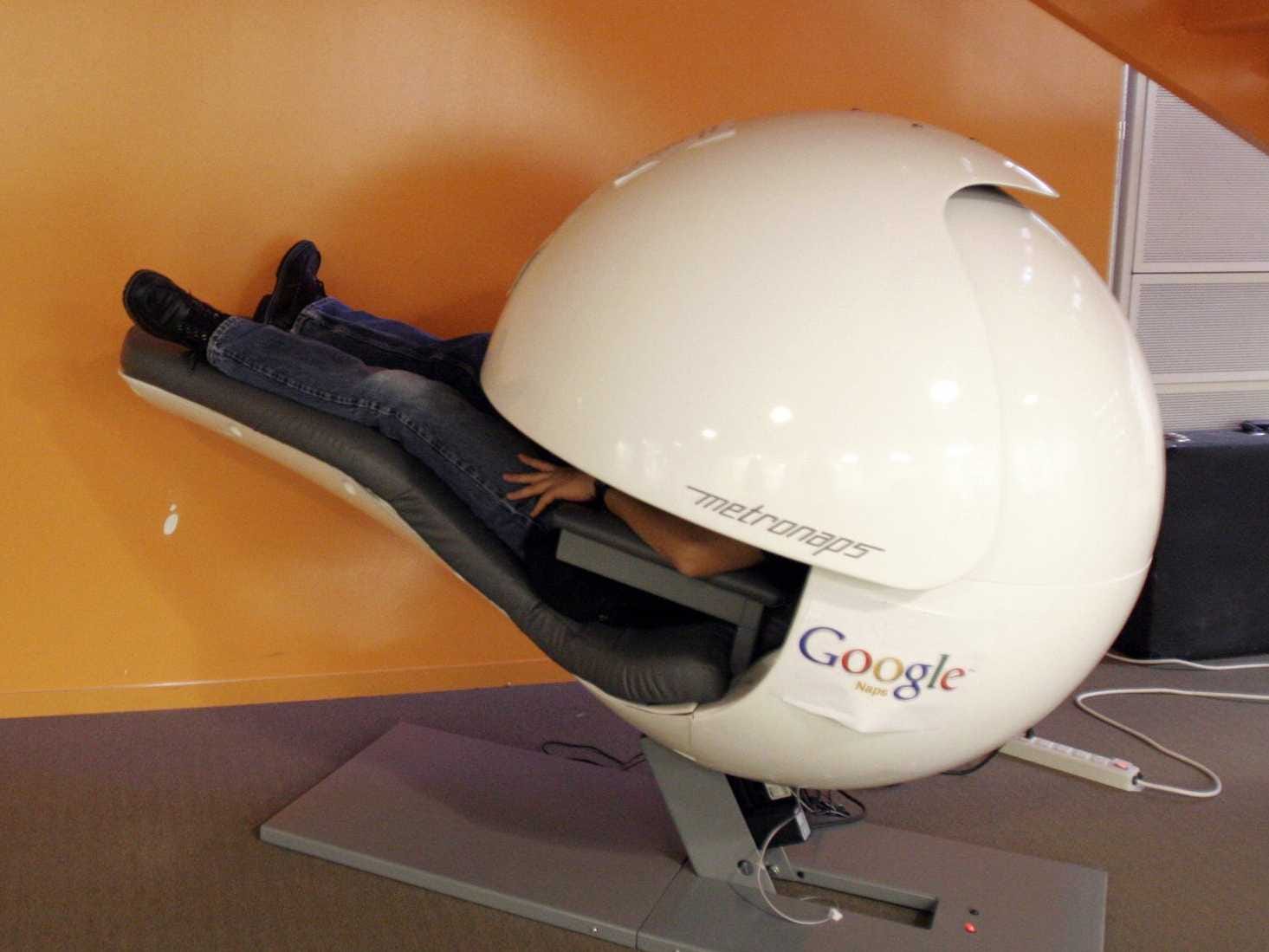
Google sleep pod
The workplace becomes the one-stop-shop for human needs and, in doing so, creates an unhealthy reliance or co-dependence.
Researchers have found time and time again that a key determinant of addiction are environmental factors. It is not about individual willpower or moral failure but rather how an individual relates with their environment. Critically, humans - and animals more generally – need enrichment.
It may be surprising to learn that 75% of people who use heroin do not form an addictive dependence to the opioid. It goes without saying that the drug wreaks absolute havoc on those who do get addicted. What separates the 75% of people who do not form dependence from the 25% who do?
Consider this experiment with mice. There are five crammed in a cage without much to do. When you give these mice drugs, 95% really indulge on drugs such as heroin. Yet when their environment is changed so that the animals can train, can play, can eat, can meet, can socially engage… addiction rates remain very low. By creating an enriched environment, humans and animals avoid being consumed by pleasure seeking.
To gain a sense of enrichment, we need to find fulfillment outside of our work. We need robust social connection with friends and family, hobbies, meaning and purpose outside of work.

If organizations choose to intentionally or unintentionally foster work addiction, they can expect employees that are stressed, overly emotional, burned-out and depleted. Employees will be unable to respond to change or crisis, unable to be creative, unable to perform their duties. These organization can expect low engagement and low retention. To ignore these physiological facts is to court certain failure.
To encourage health environments, organizations need to create the conditions for their people to:
The cycle of addiction is characterized by a wheel of exhaustion and pleasure, one giving way to the other, until the organism collapses. What does an adaptive model look like?
When an organism reaches exhaustion, its primary concern is rest. Rest and recovery are the first line of defense. Next, a desire for pleasure emerges. Pleasure and self-medication are not necessarily a bad thing – they act as a motivation towards something. The physical body is attempting to feel. It is in that motivation towards a new equilibrium that an escape door exists.
The key to ending the addiction cycle is to feel one’s feelings. To name them, to feel them. One must go through the body, to regulate the system and hormones.
Emotions are the information system of the body.
Emotions are physical phenomena – they are a cluster of physical movements and hormonal changes that we aggregate and label an emotion. Take for instance an individual who is clenching their fists, tense in the back, showing their teeth, glaring narrow eyes. Their heart is racing, their adrenaline is coursing. We may label this state – anger.
Emotions’ primary function is to redirect our attention and focus. When we are lost in mental thought or chatter, it is the role of emotion to alert us to a change in our inner or outer environment. “I am lost in thought but now I feel hungry”. Hunger directs us to a present need. It serves as motivation – a call to action in a particular direction.
All emotions – whether hunger, tiredness, anger, joy – call our attention to the present moment and direct our attention. This exquisite, sophisticated system keeps us alive and healthy.
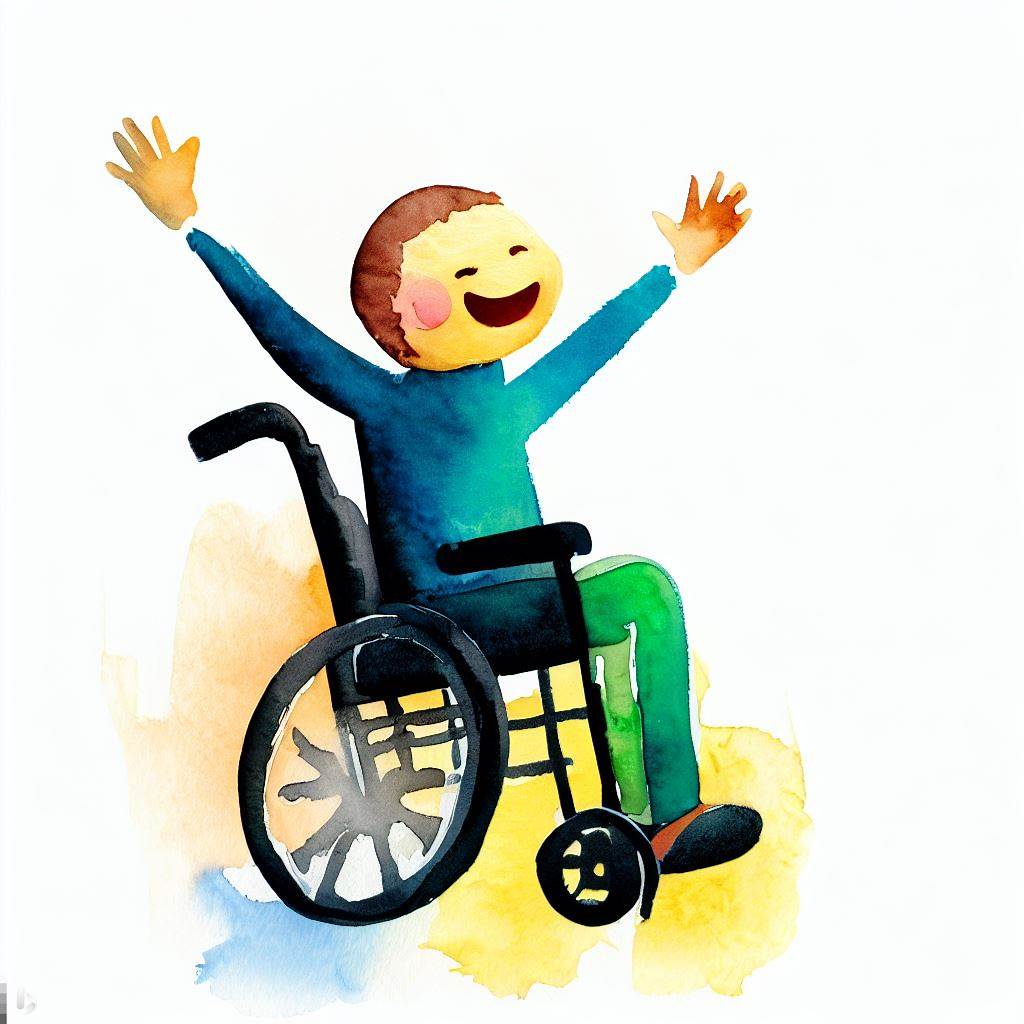
When the addiction cycle represses emotion, it interrupts our “needs system” from alerting us to necessary information. Caffeine masks our need to sleep, nicotine masks our need to eat or take a break or to socialize. The alarm bell is ringing but cannot be seen, cannot be heard.
A high-level leader prided himself on working long hours, bragging about 80-90 hour weeks. He didn’t take vacations and enjoyed the feeling of discipline. He often expressed that he had “overcome feeling emotions” and approached business with “rational logic.” After a few years he started experiencing shaking in his hands. This turned into full body shaking. Eventually he collapsed and had a seizure. After many medical tests, he was diagnosed with panic attacks and stress-induced seizures.
He was forced to quit his job and take over a year off from work to recover. During this time, he realized and came to accept that by skipping rest and overriding his senses, he had no information on what was happening with his body. In turn, eventually, the body overrode the “rational logic” and forced a shut down.
Adaptation necessitates listening to the signals of the body, honoring their message and taking action in line with their instructions. In this act, an emotion is processed and does not need to be coupled with pleasure. It can exist and be respected in its own right and then let go.
This simple technique – feeling, labeling, processing emotions – is also one of the most difficult skills for us to build. To remain present and sensitive to the body in all moments of work and life.
A student once asked his teacher, "Master, what is enlightenment?"
The master replied, "When hungry, eat. When tired, sleep."
How often are you aware of your body and its information during the work day?
For the next 3 days…
Before you start your work day, during your lunch break, and at the conclusion of your work day – check in with yourself.
After 3 days, notice, what did these check-ins reveal? How did they support you?
Many professions in our information age are professions of cognitive ability. They require and celebrate the mind.
Self-regulation – the ability to manage thoughts, emotions, behavior – exists outside of the mind. As we described in the process of stress, it exists in the body. Bottoms-up. We can no longer separate the physical and the mental.
As stated above, emotions are really the aggregate of physical changes in the body. And just like how thoughts influence emotions, emotions influence our thoughts. When the physicality of the body breaks down, the emotions and the thinking process are soon to follow.
While the topics of stress, burn-out, addiction, illness feel heavy… the other side of the coin is filled with joy. Fulfilling our individual health potential allows us to be happy, to be healthy, to be strong. In this space, life becomes celebration.

As such, there are 4 key areas where attention is needed to maintain one’s physical and therefore emotional and cognitive health:
Each one allows us to fully feel our body, receive information and healthily adapt. Each one brings us nourishment and vitality. And ultimately, each one creates the conditions for high performance within the workplace.
Emotional hygiene is not a “nice to have”. If you cannot build a company that fosters a healthy emotional culture, then it is possible your company should not exist to begin with. When a company proceeds in a manner that is not sustainable… then time itself will drag it down.
As mammals, as humans we are social beings. We have evolved over millions of years to enjoy the benefits of positive emotional hygiene. Merely keeping the physical healthy while not attending to the emotional will foster survival, stress and burn-out.

As we move from the physical to the emotional layer, there are 5 additional areas needed to fulfill our psychological needs:
Many companies that start a wellness journey place the responsibility of health at the feet of individual employees. And while each person must take responsibility for their own health, leadership, structures and culture have an oversized impact on employee health. An organization that shirks is responsibility to create the conditions for health is setting up a battle with their employee’s humanity.
As with many outcomes in the workplace, leadership is a key determinant of health outcomes. Leadership accounts for at least 70% of a team's engagement over time.
Studies have found that workers who felt treated fairly by their bosses have lower cardiovascular risks up to 8 years later. Supportive leadership leads to less employee burn-out. And when leaders are “perceived as concerned, honest, and consistent”, employees experience much less stress.
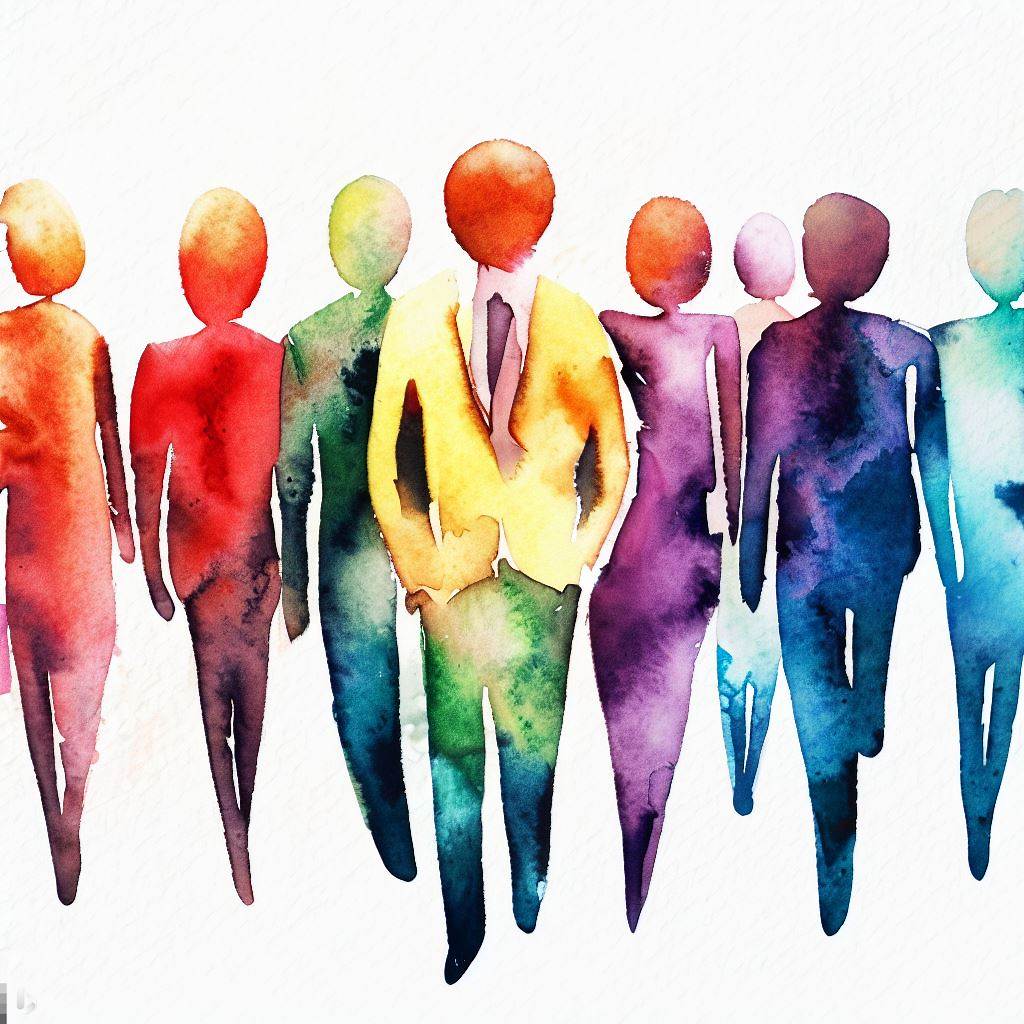
Conversely, inadequate or toxic leadership has the opposite impact on employees. Research has found that employees with emotionally abusive supervisors (e.g., ridicule, blame) have higher levels of depression, anxiety, and emotional exhaustion 6 months later. A longitudinal study of hospital workers found that managerial practices predicted sickness absence, minor psychiatric morbidity, health status 2 years after leaving the job. Exposure to sexual harassment predicts psychological distress.
This is not to mention how many disabilities are directly caused by the employment, through “accidents that leave permanent impairment, illness and other detrimental effects of work”. Researchers in the United States found 33% of disabled people between the ages of 51 and 61 attributed their impairment to their work while another study in the Netherlands found 53% reported a direct causal relation.
Safety – physical, emotional, mental – cannot be compromised. If you employ humans, their humanity must be respected.
To support individual responsibility, research has shown wellness programs must include:
For a program to work systemically and sustainably, research has shown organizational interventions need:
“Improving population health requires more than simply convincing people to take better care of themselves. It requires that the organization where individuals spend a good portion of their waking hours creates an environment where leading a healthy lifestyle is the “default” option. As an example, a supportive company culture is exemplified by company cafeterias, where healthy food is abundant, affordable, clearly labeled, tastefully prepared, and situated at eye level at the checkout counter. When possible, these foods are also priced lower than less healthy items. In addition, healthy and appealing food is served at meetings, included in company-provided overtime meals, and available in vending machines.”
While health and wellness determine the quality of employee life and the financial performance of an organization, the trend lines are going in the wrong direction. As evidenced by this article, much time is still spent arguing why health should even be a business priority. Ignoring empirical evidence and ethics, businesses continue to “burn and churn” through employees, kicking the can down the road on health and offloading the negative costs on the rest of society. Nurturing an addiction culture instead of a health culture.
What is missed in this equation is the room for people’s humanity. A holistic and sustainable approach to running a business. And once that is embraced, organizations can reap tremendous benefits while allowing their people to live in joy and abundance.
We hope that by offering an empirical explanation of stress and addiction, you the reader can become an inner and outer leader of health. That we can all attend to the physical body, the emotional body and the mental body.
Through rest & recovery, movement, nutrition, meditation, social support, nature connection and sense of fun, we can all feel what it means to be a full, vital human. To feel ready for the day, energetic, present, loved, connected and playful.
The alternative is exhaustion, atrophy, illness, anxiety, isolation, depression and heaviness.
What choice will you make?
Reading about organizational wellness and implementing its lessons are not the same.
Looking for support? Tell us about your team!

